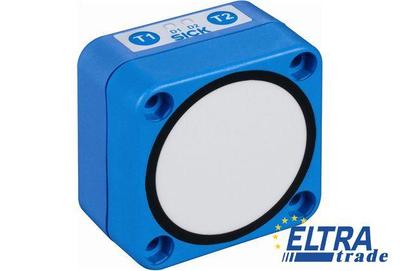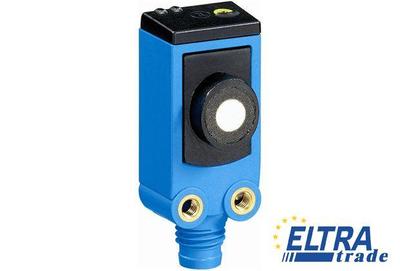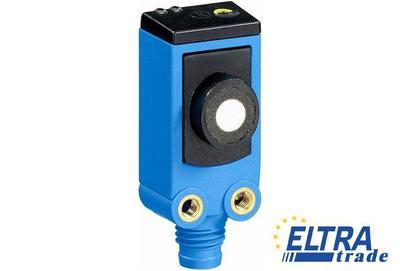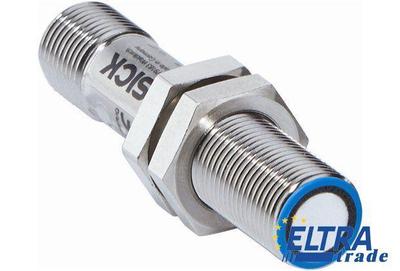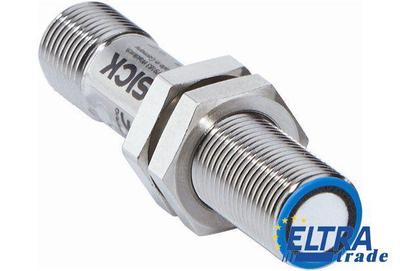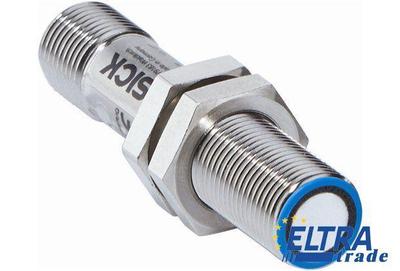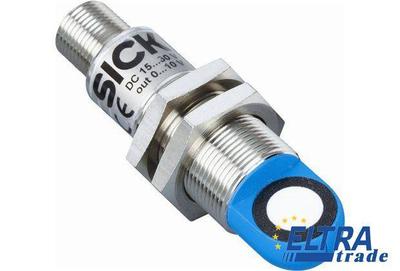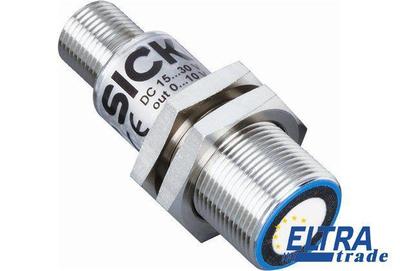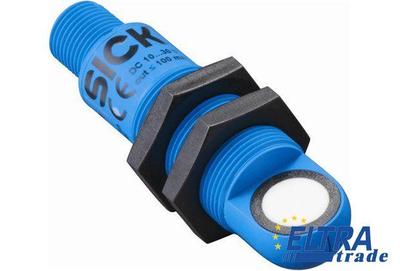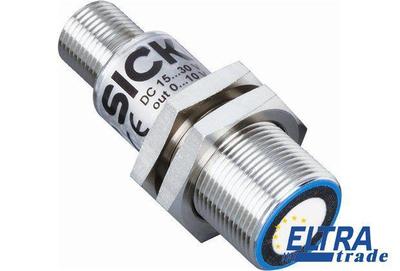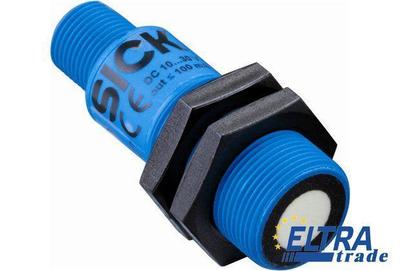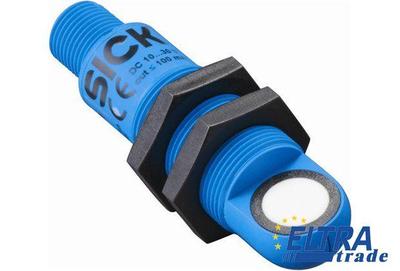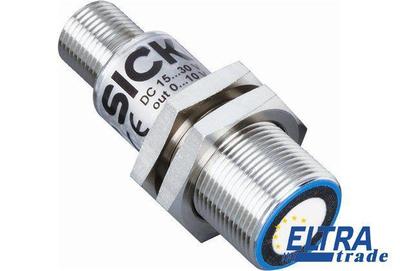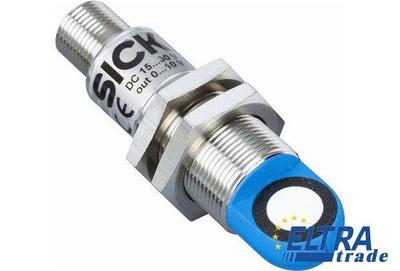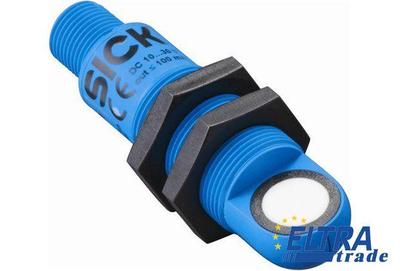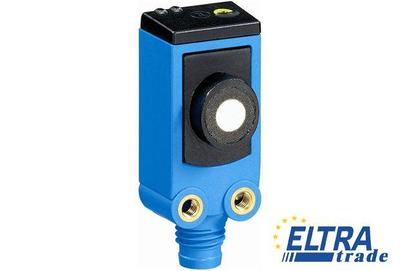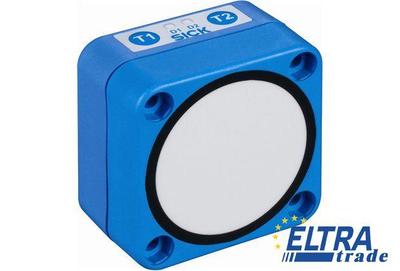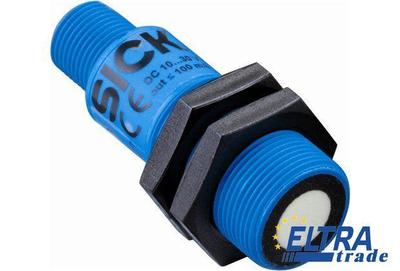Sick Ultrasonic sensors
- Reliable operation, regardless of material color, transparency, gloss, and ambient light
- Rugged rectangular housing with teach-in buttons
- Range up to 8,000 mm
- Reliable operation, regardless of material color, transparency, gloss, and ambient light
- Rugged rectangular housing with teach-in buttons
- Range up to 8,000 mm
- Reliable measurement, regardless of material color, transparency, gloss, and ambient light
- Ultrasonic technology in a miniature housing
- Detection, measurement, and positioning with ultrasonic technology
- Reliable measurement, regardless of material color, transparency, gloss, and ambient light
- Ultrasonic technology in a miniature housing
- Detection, measurement, and positioning with ultrasonic technology
- Reliable measurement, regardless of material color, transparency, gloss, or ambient light
- Very short and rugged M12 metal housing
- Variants with PNP/NPN switching output or analog output
- Reliable measurement, regardless of material color, transparency, gloss, or ambient light
- Very short and rugged M12 metal housing
- Variants with PNP/NPN switching output or analog output
- Reliable measurement, regardless of material color, transparency, gloss, or ambient light
- Very short and rugged M12 metal housing
- Variants with PNP/NPN switching output or analog output
- Reliable measurement, regardless of material color, transparency, gloss, or ambient light
- Very short and rugged M12 metal housing
- Variants with PNP/NPN switching output or analog output
- Reliable measurement, regardless of material color, transparency, gloss, or ambient light
- Very short and rugged M12 metal housing
- Variants with PNP/NPN switching output or analog output
- Reliable measurement independent of material color, transparency, gloss and ambient light
- Four ranges up to 1,300 mm
- Short M18 metal housing with a length of 41 mm
- Reliable measurement independent of material color, transparency, gloss and ambient light
- Four ranges up to 1,300 mm
- Short M18 metal housing with a length of 41 mm
- Reliable measurement independent of material color, transparency, gloss and ambient light
- Four ranges up to 1,300 mm
- Short M18 metal housing with a length of 41 mm
- Reliable measurement independent of material color, transparency, gloss and ambient light
- Four ranges up to 1,300 mm
- Short plastic M18 housing with a length of 41 mm
- Reliable measurement independent of material color, transparency, gloss and ambient light
- Four ranges up to 1,300 mm
- Short plastic M18 housing with a length of 41 mm
- Reliable measurement independent of material color, transparency, gloss and ambient light
- Four ranges up to 1,300 mm
- Short M18 metal housing with a length of 41 mm
- Reliable measurement independent of material color, transparency, gloss and ambient light
- Four ranges up to 1,300 mm
- Short M18 metal housing with a length of 41 mm
- Reliable measurement independent of material color, transparency, gloss and ambient light
- Four ranges up to 1,300 mm
- Short plastic M18 housing with a length of 41 mm
- Reliable measurement independent of material color, transparency, gloss and ambient light
- Four ranges up to 1,300 mm
- Short M18 metal housing with a length of 41 mm
- Reliable measurement independent of material color, transparency, gloss and ambient light
- Four ranges up to 1,300 mm
- Short plastic M18 housing with a length of 41 mm
- Reliable measurement independent of material color, transparency, gloss and ambient light
- Four ranges up to 1,300 mm
- Short M18 metal housing with a length of 41 mm
- Reliable measurement independent of material color, transparency, gloss and ambient light
- Four ranges up to 1,300 mm
- Short M18 metal housing with a length of 41 mm
- Reliable measurement independent of material color, transparency, gloss and ambient light
- Four ranges up to 1,300 mm
- Short M18 metal housing with a length of 41 mm
- Reliable measurement independent of material color, transparency, gloss and ambient light
- Four ranges up to 1,300 mm
- Short M18 metal housing with a length of 41 mm
- Reliable measurement independent of material color, transparency, gloss and ambient light
- Four ranges up to 1,300 mm
- Short M18 metal housing with a length of 41 mm
- Reliable measurement independent of material color, transparency, gloss and ambient light
- Four ranges up to 1,300 mm
- Short plastic M18 housing with a length of 41 mm
- Reliable measurement independent of material color, transparency, gloss and ambient light
- Four ranges up to 1,300 mm
- Short plastic M18 housing with a length of 41 mm
- Reliable measurement, regardless of material color, transparency, gloss, and ambient light
- Ultrasonic technology in a miniature housing
- Detection, measurement, and positioning with ultrasonic technology
- Reliable operation, regardless of material color, transparency, gloss, and ambient light
- Rugged rectangular housing with teach-in buttons
- Range up to 8,000 mm
- Reliable operation, regardless of material color, transparency, gloss, and ambient light
- Rugged rectangular housing with teach-in buttons
- Range up to 8,000 mm
- Reliable measurement independent of material color, transparency, gloss and ambient light
- Four ranges up to 1,300 mm
- Short plastic M18 housing with a length of 41 mm
Sick is a leading manufacturer of sensors and sensor solutions, including ultrasonic sensors. Sick ultrasonic sensors use sound waves to detect and measure distances, presence sensing, and levels of objects or materials in a wide range of industrial applications. Below we will discuss Sick ultrasonic sensors in more detail.
Working Principle of Sick Ultrasonic Sensors
Sick ultrasonic position sensors work on the principle of ultrasonic waves and echo reflection from objects.
An ultrasonic transducer emits high-frequency sound waves, usually in the ultrasonic range (above 20 kHz). These sound waves are generated by a piezoelectric transducer inside the sensor. Emitted sound waves propagate through the air or any other medium to a target object or surface. Sound waves travel in a straight line until they hit an object.
When sound waves reach an object or surface, they are partly reflected back as an echo. Reflected sound waves carry information about the presence, distance, or other characteristics of an object.
Ultrasonic sensing, which also acts as a receiver, detects the echoes of emitted sound waves that are reflected back from the object. The transducer converts the received echo signals into electrical signals. An ultrasonic sensor measures the time it takes for emitted sound waves to travel to an object and for the echo to return to the sensor. This time interval is known as flight time.
Knowing the speed of sound in a medium (air, liquid or solid), the ultrasonic sensor calculates the distance between the sensor and the object using the time of flight. The distance is determined by the formula: Distance = Speed of sound × Time of flight / 2.
The received echoes are processed by the sensor electronics to extract the relevant information. The sensor electronics analyze the amplitude, duration, and other characteristics of the received echoes to determine the presence, distance, or other parameters of an object.
Based on the processed signals, the ultrasonic sensor generates an output signal that provides information about the object, such as its distance or presence. This output can be in the form of a digital signal, analog voltage, or current, depending on the specific sensor model and application requirements. The sensor can transmit this information to the connected control system or automation equipment for further processing or action.
Applications of Sick Ultrasonic Sensors
Sick ultrasonic sensors are used in a variety of industries and applications where material flow control and fill level monitoring are required.
- Distance measurement.
- Object and presence detection.
- Level monitoring.
- Collision avoidance.
- Assistance with parking.
- Robotics and automation.
- Material processing.
- Fluid flow monitoring.
- Industrial automation.
Integration and Programming of Sick Ultrasonic Sensors
Integration and programming of Sick ultrasonic transducers typically involve the following steps.
- Sensor installation. Install the ultrasonic sensor in a suitable place where it can effectively detect the desired objects or distances.
- Power supply. Connect the power supply to the ultrasonic transducer according to the manufacturer's specifications. Make sure the voltage and current requirements are met to adequately power the sensor.
- Wiring. Connect the required wiring between the ultrasonic transducer and the control system or data acquisition device.
- Configuration and settings. Most Sick ultrasonic transducers have configurable parameters and settings that need to be adjusted to meet specific application requirements.
- Communication setup. If the ultrasonic sensor supports communication protocols such as IO-Link, CANbus, or Ethernet, set the communication parameters accordingly.
- Control system programming. The control system or PLC (Programmable Logic Controller) used in your application requires programming to interact with the Sick ultrasonic transducer. Write or modify a control program to read the output of the sensor, process the data, and trigger appropriate actions based on the requirements of the application.
- Testing and calibration. Once integration and programming are complete, perform a thorough test and calibration of the ultrasonic transducer system.
Factors to Consider when Choosing Sick Ultrasonic Sensors
If you want to choose for example Sick ultrasonic label sensor you need to consider several factors.
- Determine the required sensitivity range for your application. Consider the minimum and maximum distances at which the sensor must detect objects or measure distances.
- Estimate the required level of accuracy and resolution for your application. Consider the smallest detectable change in the distance or presence of an object that the sensor must measure.
- Assess the environmental conditions in which the sensor will operate. Consider factors such as temperature, humidity, dust, vibration, and potential exposure to liquids or chemicals.
- Consider the properties of the objects or materials that the sensor will detect. Some ultrasonic transducers are optimized for certain object types or surface finishes.
- Determine the required output type and compatibility with your control system or data acquisition device. Sick ultrasonic sensors can provide output data such as analog voltage, current, digital signals, or communication protocols such as IO-Link or CANbus.
- Estimate the required response time for your application. Consider the speed at which you need to detect objects or distances and your overall system performance requirements.
- Consider mounting options and sensor installation requirements. Determine the physical constraints, available space, and mounting methods for your application.
If you want more detailed information about this equipment then we recommend that you read the Sick ultrasonic sensor manual.

